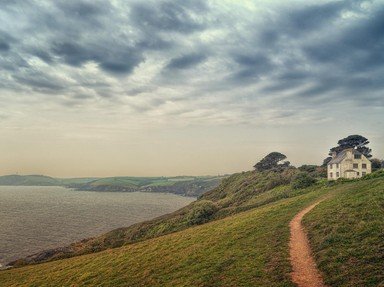Quiz Answer Key and Fun Facts
1. This beautiful archipelago is located approximately twenty eight miles south west of Land's End. Which ocean current is responsible for these islands sub-tropical climate?
2. Greenway Estate, on the banks of the River Dart, was purchased by which locally born author during 1938?
3. Nestled in a valley within the Dartmoor National Park, which village is famed for a literary character associated in song with this creature?
4. This castle stands at the entrance to the River Dart, one of south Devon's most important waterways. During which conflict did the construction of Dartmouth Castle take place?
5. To where in Devon should a visitor travel in order to hear 'Great Peter' sing each and every hour?
6. Located atop an island off the south coast of Cornwall is this beautiful building. Although not as impressive as its French namesake, by what name is this aristocratic seat known?
7. Impressive geographical granite features such as this can be found across south west England. By which of the following names are they known within Devon and Cornwall?
8. This little steam powered tug shares its name with a famous flight of steps in the City of Plymouth, on the border between the counties of Devon and Cornwall. Which famous vessel are these steps named for?
9. Famed for its surfing culture and the best beaches in the south of England, in which town on Cornwall's northern coast is this footbridge a feature?
10. Amongst the engineering achievements of the great Victorian engineer Isambard Kingdom Brunel is this bridge which spans the River Tamar at Plymouth. Another of his greatest achievements is the railway network that it carries. What was the name of this railway?
Source: Author
SisterSeagull
This quiz was reviewed by FunTrivia editor
spanishliz before going online.
Any errors found in FunTrivia content are routinely corrected through our feedback system.

